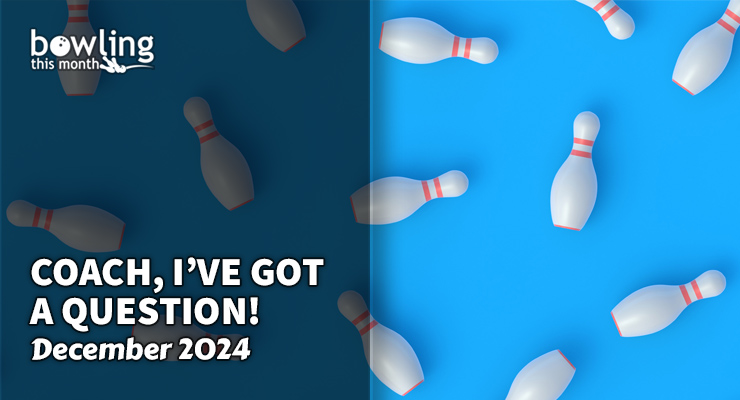
Article Contents
- 1. I’m working on my release and trying to use my elbow rather than my wrist to…
- 1.1. Where it goes wrong
- 1.2. Getting it right
- 2. In my league, I watch other bowlers to see how they bowl. Some bowlers walk toward…
- 2.1. Walking away from the target
- 2.2. Walking toward the target
- 2.3. Straighter footwork
- 2.4. Everything Toward the Target (ETT)
- 2.5. Summing it up
Note: This article is only available to Bowling This Month subscribers.
In this recurring feature, I answer questions from Bowling This Month readers and bowlers that I work with. If you have questions, please leave them in the comment section below so I can address them in a future installment of Coach, I’ve Got a Question!
I’m working on my release and trying to use my elbow rather than my wrist to generate revolutions. Sometimes, I find my elbow flying out early. How can I improve this?
I’ve seen a lot of social media posts recently that highlight the importance of elbow bend in the modern release. I think it’s important to give this some context and discuss the importance of how we’re framing our thoughts around the release.
First, elbow bend during the downswing is not a new concept. Amleto Monacelli was a dominant force on the PBA Tour in the late 1980s, in part because of the power he created with some elbow bend in his swing. Other bowlers have also done it and been considered ahead of their time.
Second, the idea that you can use your elbow “rather than” your wrist to create revolutions is a misguided one. The wrist is the second-to-last lever in the kinetic chain, with only the fingers affecting the release after the wrist action. The elbow comes before the wrist, but each one performs a different job during the release phase of the approach.
The fingers are responsible for the direction of the rotation of the ball, and they are also the last point of contact with the ball to impart revolutions. You want them in the ball as long as possible after the thumb exits in order to create a smooth and powerful release. The faster they travel around the ball, the more revolutions you can create. However, it’s not the fingers that determine how fast they move; it’s the wrist.
The wrist has the most responsibility leading up to and during the release. Its positioning determines axis tilt, and the wrist helps rotate the hand to affect axis rotation. Most importantly, the speed at …
